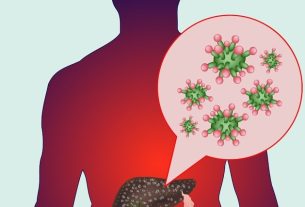Treatment for osteoporosis is aimed at strengthening bones. Therefore, it is very common for people undergoing treatment, or preventing the disease, in addition to increasing their intake of foods with calcium, to also take calcium and vitamin D supplements. However, this type of supplementation must Always be advised by a doctor to avoid being harmful to your health.
Some general recommendations include regular moderate physical exercise, as well as abandoning some more harmful practices such as the use of tobacco, alcohol or drugs, for example.
Therefore, when symptoms such as frequent fractures or constant pain in the bones appear, it is important to consult a doctor to assess the possibility of osteoporosis and begin appropriate treatment. See what signs may indicate osteoporosis.

How the treatment is carried out
The main forms of treatment for osteoporosis are:
1. Osteoporosis remedies
Osteoporosis medications should be taken daily when indicated by your doctor and can be:
- Calcitonin in injectable or inhaled form: prevents calcium levels from becoming too high in the bloodstream;
- Strontium ranelate: increases bone formation;
- Teriparatide in injectable form: reduces the risk of bone fractures;
- Calcium and vitamin D supplement: They help restore the levels of these nutrients in the body, promoting bone health, in addition to food.
The use of these remedies should only be done under the guidance of a doctor, as it is necessary to adapt the dose and duration of treatment to each specific situation. Discover other examples and how osteoporosis medications work.
In order to control the loss of bone mass, the doctor may also request bone densitometry every 12 months or in shorter periods, depending on each case, in order to adjust the dose of the medication.
2. Moderate physical exercise
Physical activity is a great ally for strengthening bones because, in addition to encouraging the entry of calcium into the bones, it also prevents the loss of bone density and even improves balance and muscle strength, preventing falls that can have serious consequences in people with osteoporosis. .
To achieve these benefits, it is recommended that you do moderate physical activity with light impact, such as walking, for at least 30 to 40 minutes per session, 2 to 3 times a week. Another good activity to add to running is weight training, as it is the best way to strengthen muscles and joints, however, it is important that this activity is guided by a doctor or physical activity professional to help adapt to osteoporosis. .
Generally, exercise is the first line of treatment against osteopenia, before osteoporosis sets in, because when the disease is advanced it is necessary to take medication.
3. Proper nutrition
Nutritional treatment for osteoporosis can be achieved through a diet rich in calcium. Good tips are to add grated cheese, almonds or cream to your meals, if possible, and for snacks, give preference to yogurts enriched with vitamin D, for example.
However, the osteoporosis diet does not exclude the need to take medications prescribed by the doctor, nor the practice of exercise.
Read too: Diet for osteoporosis: what to eat and what to avoid
Is osteoporosis curable?
There is no cure for osteoporosis, but it is possible to improve bone mass, leaving bones stronger and with less risk of fracture by treating them with medication, diet and exercise, which must be followed for life.
When to do bone densitometry
Bone densitometry is the test that evaluates bone mass and should be carried out in women over 65 and men over 70. Furthermore, there are special situations in which this test may be recommended, such as pre- or post-menopausal women. , as well as people who are taking hormone replacement therapy, continuous use of corticosteroids or treatment with diuretics and anticonvulsants, for example.
Understand more about what bone densitometry is and when it should be done.
Bibliography
- NHS. Osteoporosis Treatment. Available at: <https://www.nhs.uk/conditions/osteoporosis/treatment/>. Accessed on Aug 21, 2019
- TU, Kristie N. et al. Osteoporosis: A Review of Treatment Options. P&T. Vol.43. 95-99, 2018
- SÖZEN, Tümay et al.. An overview and management of osteoporosis. European Journal of Rheumatology. Vol.4. 52-54, 2017

Sign up for our newsletter and stay up to date with exclusive news
that can transform your routine!
Warning: Undefined array key "title" in /home/storelat/public_html/wp-content/plugins/link-whisper-premium/templates/frontend/related-posts.php on line 12
Warning: Undefined array key "title_tag" in /home/storelat/public_html/wp-content/plugins/link-whisper-premium/templates/frontend/related-posts.php on line 13




